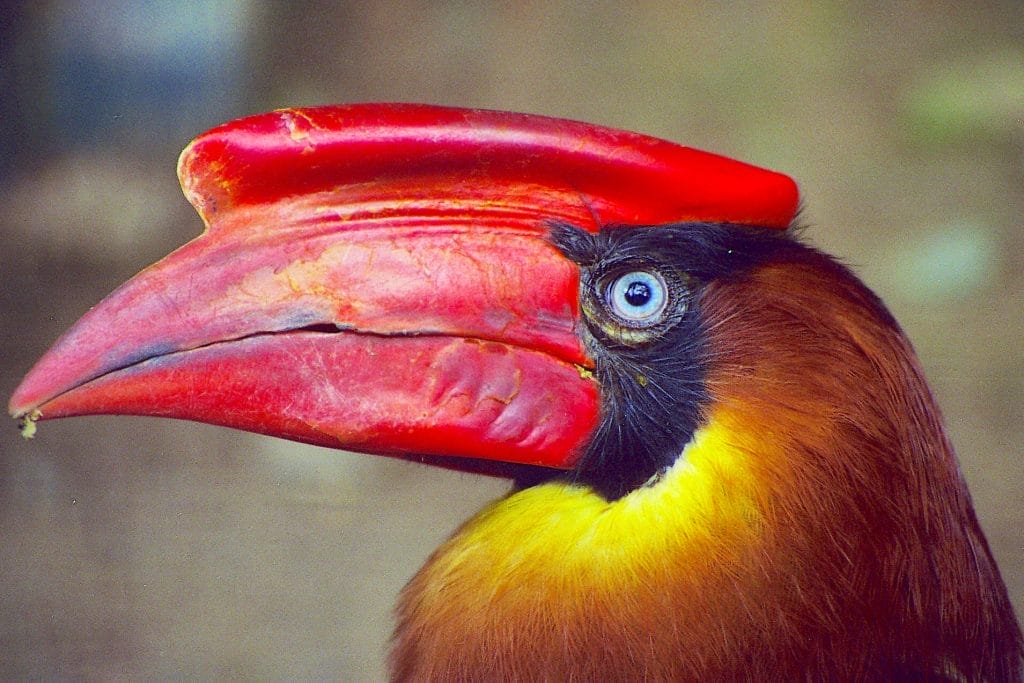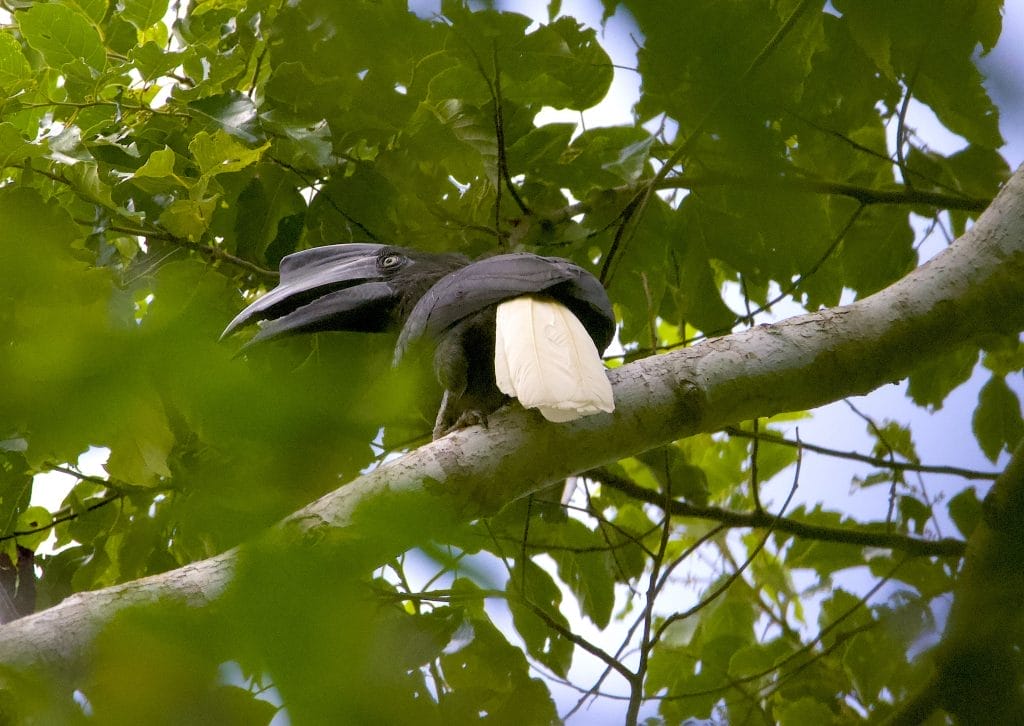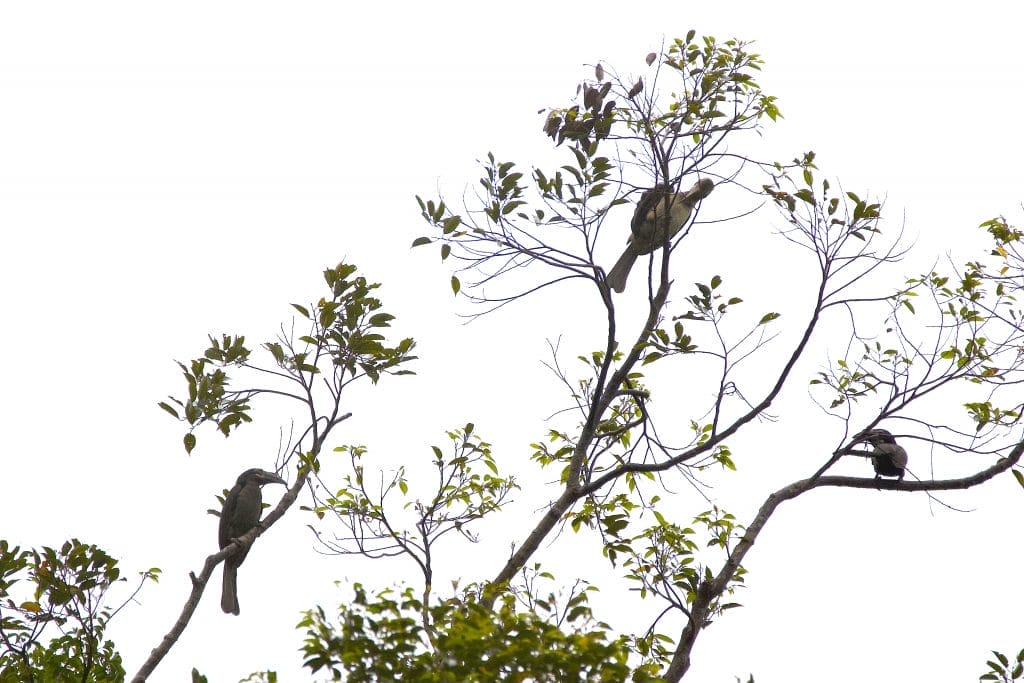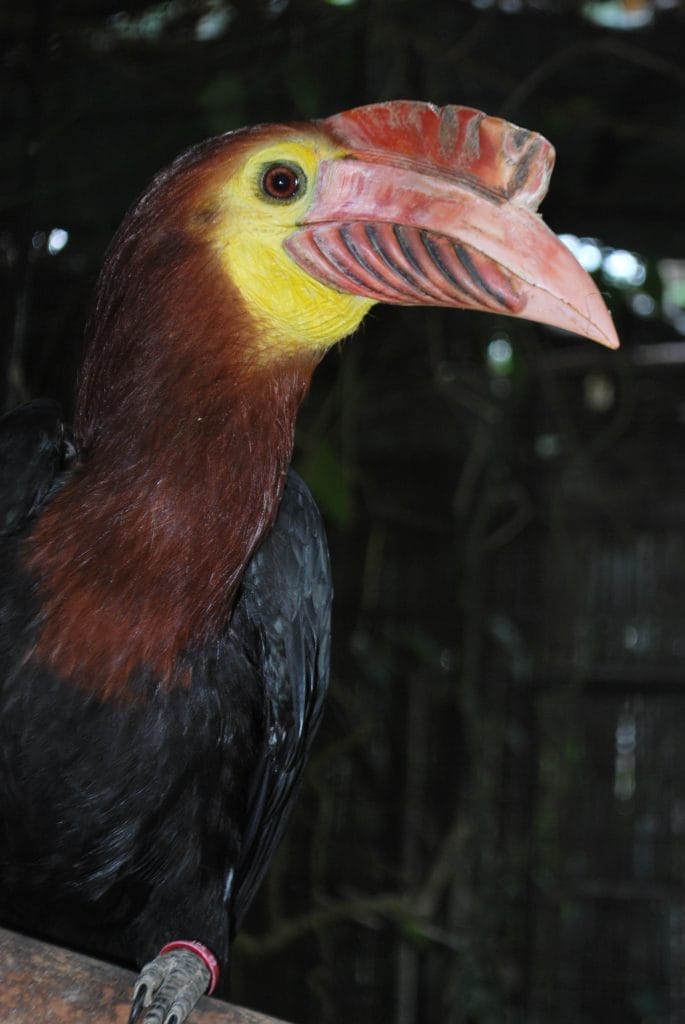By Juan Carlos T. Gonzalez
Hornbills are a charismatic group of Old World tropical land birds, recognizable by their colorful plumage, decorative casque, resonating calls and gaudy facial skin. Hornbills are best known for their prominent long down-curved bill supported dorsally by the casque, which appear as a simple thickened brace to highly elaborate shapes.

Hornbills are generally omnivorous, feeding on seeds, fruits, insects, eggs and small vertebrates. Many forest-dwelling species are mainly frugivorous, but supplement their fruit diet with animal protein during the breeding season. Dubbed as “farmers of the rainforest”, they have close evolutionary links with figs, palms and large-seeded forest trees like nutmegs, mahogany and laurels.
As a result, hornbills provide invaluable ecosystem services through seed dispersal, especially from their foraging movements between primary and secondary forests. They help enrich disturbed or residual forests, or aid succession by distributing pioneer tree species across forest patches, or assist establishment of strangling figs in the canopy. As faunivores, they also help regulate arthropod abundance and small vertebrate populations.

Hornbills nest in tree holes, and many species require tall trees with wide boles and deep cavities. The incubating female practices nest plastering behavior, wherein she seals the cavity entrance with mud, wood or fruit pulp leaving only a narrow slit where food is delivered by the male. This nest sealing behavior is unique to hornbills, with the male aiding the female, thereby providing protection to the sealed female in molt inside the nest cavity. Once the chicks have hatched and have grown in size, the female will burst out of the nest to help feed the chicks, both parents tasked in resealing the entrance.

Hornbills have interesting social behaviors, some form gregarious feeding flocks, and even travel in large flocks across wide distances between feeding stations. Others form small territorial family groups which practice cooperative breeding strategies which retain non-breeding helpers from previous broods to aid the breeding pair.

Endemism by country is limited among hornbills as many species have ranges across multiple countries. Only five countries harbor unique species, namely Tanzania (1), Indonesia (3), India (2), Sri Lanka (1), and the Philippines (11), which represent insular taxa or have highly restricted ranges. The Philippines is exceptional, as it harbors 11 species of hornbills found only in the archipelago and nowhere else in the world.

The outlook on conserving these unique hornbills is indeed promising. The equally diverse cultures and ethno-linguistic groups in the Philippines had a strong connection with hornbills across the islands, highlighting their ethno-ornithological importance. This socio-cultural connection has fueled public awareness and appreciation, serving as flagship species for biodiversity conservation, eco-tourism and local pride for our history and natural heritage.
